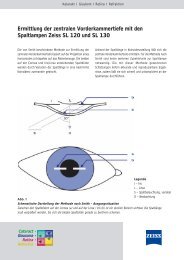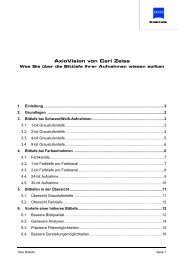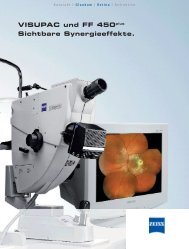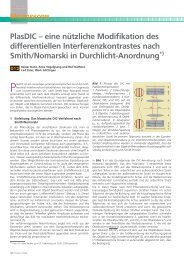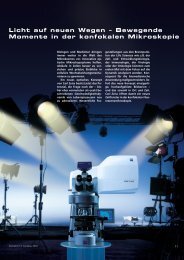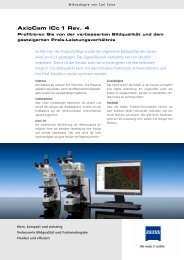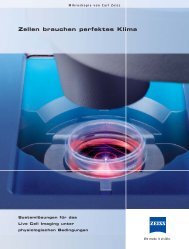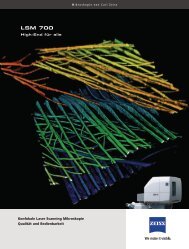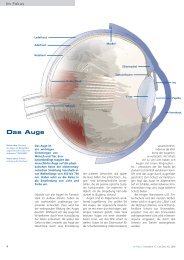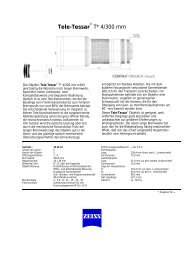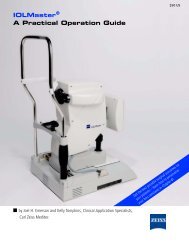Axiocam ERc 5s Operating Instructions - Carl Zeiss
Axiocam ERc 5s Operating Instructions - Carl Zeiss
Axiocam ERc 5s Operating Instructions - Carl Zeiss
You also want an ePaper? Increase the reach of your titles
YUMPU automatically turns print PDFs into web optimized ePapers that Google loves.
Control elements, indicators and connections<br />
1<br />
2 3<br />
4<br />
5<br />
Front of camera:<br />
1 LED indicator<br />
2 Manual acquisition<br />
3 AWB: Automatic<br />
white/gray balance<br />
4 Receiver for IR remote<br />
control<br />
5 Card slot for SD/SDHC<br />
memory cards<br />
1<br />
2<br />
3<br />
Back of camera:<br />
1 USB port for data<br />
transfer and power<br />
supply<br />
2 DVI signal via HDMI<br />
port for monitor, TV<br />
or beamer<br />
3 S-Video connection for<br />
recorder or monitor<br />
Definitions<br />
SD memory card: Digital storage medium for recording image data and<br />
other information. On SD cards an amount of 4 GB of data can be stored;<br />
up to 32 GB on new SDHC cards (HC=high capacity). SD cards should be<br />
formatted on a PC to FAT32 format.<br />
C-mount adapter: The C-mount is a standardized mounting thread<br />
for camera lenses. In microscopy the C-mount is used to connect digital<br />
cameras. So it is guaranteed that the image produced by the microscope<br />
objective is large enough to illuminate the small camera sensors.<br />
AWB (Automatic White Balance): The purpose of the white balance is<br />
to calibrate the camera to the color temperature of the incident light and<br />
thereby prevent color cast. However, the automatic white balance that is<br />
normally used does not work, or does not work sufficiently well, in the case<br />
of technical surfaces or macros. This is because these objects often do not<br />
have any defined pure-white or color-neutral surfaces that the automatic<br />
white balance can take as a basis for the calibration. Instead it uses the<br />
average values of the individual red, green and blue (RGB) color channels<br />
for reference. It is therefore necessary to perform the white balance<br />
manually using defined color-neutral objects.<br />
Parfocality: According to Professor A. Köhler, the focus plane set should<br />
be retained when eyepieces or objectives are changed on the microscope.<br />
Ideally, the object should appear just as sharp as it did before the eyepiece<br />
or objective was changed. Today, this also applies to the phototube for the<br />
acquisition of images using a digital camera: the sharpness of the camera’s<br />
images should correspond to that of the image you see when you look<br />
through the eyepiece. It is possible to set the parfocality of the camera even<br />
with the help of a reticle in the intermediate image of the eyepiece or with<br />
the help of an adapted monitor.



